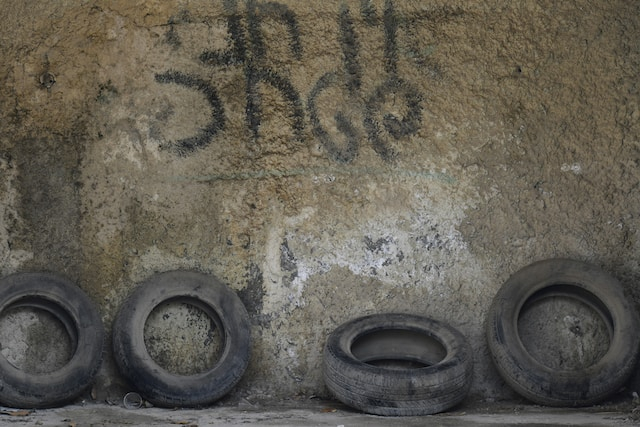If you need tires for your vehicle and want to save money, you may think that used tires make sense. It’s crucial to realize that you must familiarize yourself with the tire’s past. It can lead to safety hazards such as exposed cords, bubbles in the sidewall, lumps, knots, and holes.
Availability
A new set of tires is a significant expense for any car owner. Keeping your tires inflated properly, rotating and balancing them regularly, and taking your vehicle in for routine maintenance will help you get the most mileage. However, these steps could be better, and inevitably, you will have to consider purchasing a new set of tires at some point. Many drivers look to save money on their tire purchases by buying used tires. It is a dangerous decision as the safety of your vehicle depends on your tires.
Read More: How To Care For Your Cars Tires: 7 Important Tips From Experts
You can only know a tire’s history if the tread seems sufficient. These tires may have been hit by curbs or potholes, punctured, exposed to high temperatures, or impacted by harsh weather conditions. All of these factors can shorten the life of your tires, regardless of their original condition. Purchasing used tires can also mean missing out on a warranty. Typically, the manufacturer will contact the owner of a defective tire and reimburse them for the replacement or repair cost.
When you buy used tires, the manufacturer won’t know your information and won’t be able to contact you in case of an issue. To avoid the higher price tag of new tires, shop online and search for the best deals on used tires near me. Be sure to factor in delivery, mounting and balancing costs as well as the price of the tires.
Cost
Many websites can help you determine how much a new set of tires will cost. Subscription services also offer an in-depth breakdown of tire performance, including wet braking, hydroplaning and tread depth. Money may be tight, and the cost of new tires might seem prohibitive to some drivers.
It’s crucial to remember that the tiny rubber patches on your car that come into touch with the road keep it safe overall. The condition, size and tread of the tires determine how your vehicle responds to driver input, the distance it takes to stop and the ability of the suspension to handle curves.
Purchasing used tires can lower initial costs, but the tire must be replaced more frequently than a brand-new one. It means more money is spent in the long run.
It is not uncommon for tires to suffer from damage, such as a puncture from a nail or even just exposure to the sun over time. Many products are available that can repair a tire so it is drivable again for a short amount of time. When examining used tires, be sure to look for any exposed steel cords or signs of patchwork that could indicate the tire was repaired using methods not recommended by the manufacturer.
Safety
Buying used tires can save you money but can also be dangerous. If you purchase a set of used tires with holes in the sidewall, these are unsafe to drive on as they can deflate or explode during your journey. Another safety risk comes from improper repairs. It would be best to inspect the tire before purchasing to know what damage they have suffered over their lifetime.
It can include punctures, harsh weather, unsuitable storage conditions, etc. It would be beneficial if you also considered the tires’ age. Tires deteriorate after around six years of usage, even with proper maintenance. If you want to buy used tires, ensure they are no more than ten years old. It is important to remember that used tires are not subject to the same legal standards as new tires. As a result, their collection, inspection, and reinsertion into the marketplace can vary from place to place.
It is a good idea to ask the seller to provide you with a copy of their records and other relevant information. It will help you determine if the used tires are safe to use. Moreover, you can ask for a full refund if they are unsafe to drive on.
Tread Depth
The tires connect your vehicle to the road and determine how well it handles, turns and stops. The tread on the tire makes it grip the road – a shallow tread can be dangerous, even for new tires. Because of their age, used tires may also have internal damage that doesn’t show on the outside.
It could be from driving over-loaded, underinflated or at high speeds that have worn the rubber down and caused stress on the internal components. Lastly, a major consideration is the tread depth. You can buy a tread depth gauge at any auto parts store for a few dollars. Essentially, you stick it into the tire groove, and the shaft with the measurement markings slides up to reveal the depth in both 32nds of an inch and millimeters. Then, you look at the tread and see if it has a uniform or smooth appearance.
Uneven tread wear is a bad sign, as the previous car’s alignment was off, and the tire will wear out quickly. Replacing any tire with less than 4/32″ tread is a good rule of thumb. However, you should also check the tire’s sidewalls for cracks, patches or other signs of damage.
